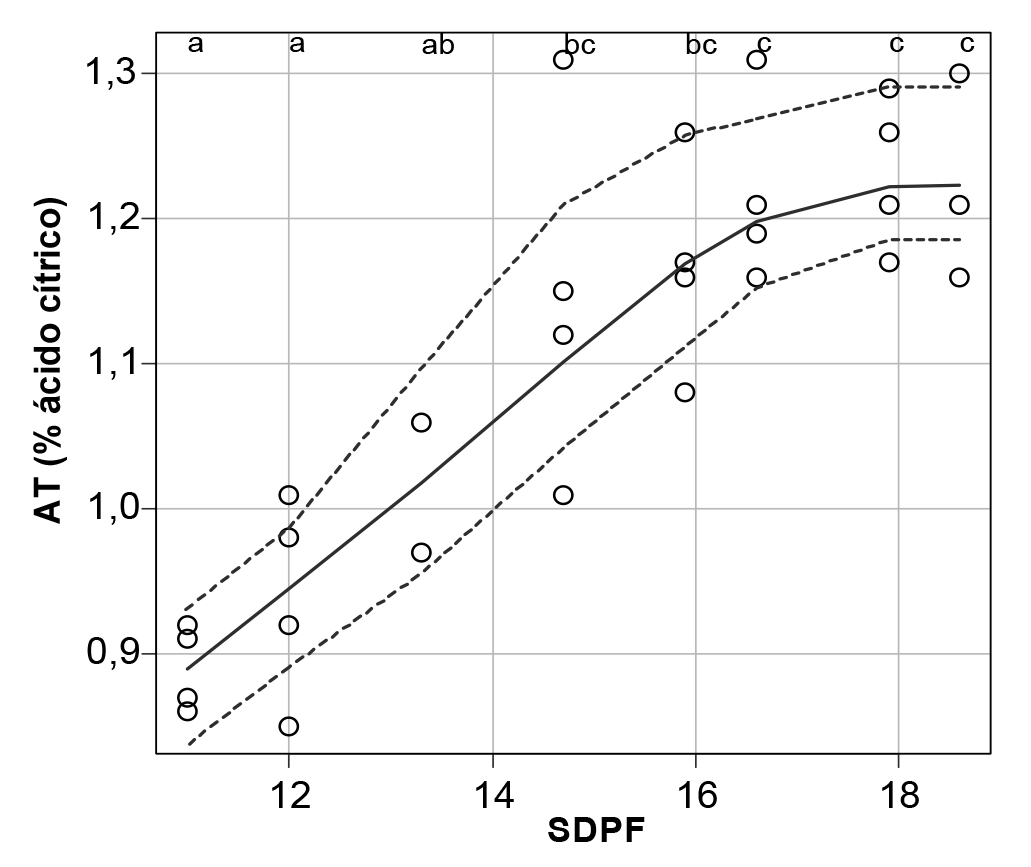Relationship between physiological maturity and commercial maturity of kiwifruit 'Hayward' growing at the South-East of Buenos Aires province (Argentina)
Keywords:
kiwifruit, physiological maturity, dry matterAbstract
Climacteric fruits, like kiwifruit, must be harvested at physiological maturity, in order to not affecting their organoleptic quality. The aim of the present work was to determinate the developmental time at which 'Hayward' fruits reached physiological maturity, by measuring objective ripening indexes. A commercial kiwifruit orchard, which was located at the South-East of Buenos Aires province in Argentina, was harvested weekly from 11 weeks after full bloom (wafb) to commercial harvest, at 18 wafb. Fruits were analyzed at harvest and after storage (53 days at 2°C) and ripening (7 days at 20°C) time. At harvest, fruit dry matter content, pulp firmness, and juice tirtratable acidity did not significantly change from 16 wafb. At the end of storage and ripening time, juice soluble solids content, tirtratable acidity, and fruit loss weight did not significantly change in fruits harvested from 16 wafb. These results suggests that physiological maturity was reached two weeks before commercial harvest. If higher standard requirements of dry matter content had to be fulfilled, commercial maturity would be just achieved at 18 wafb. At physiological maturity, the ripening indexes gave the following values: 5.4% soluble solids, 1.18% tirtratable acidity, 14.2% dry matter, and 49% black seeds.

Downloads
Published
Issue
Section
License

This work is licensed under a Creative Commons Attribution-NonCommercial-ShareAlike 3.0 Unported License.
Aquellos autores/as que tengan publicaciones con esta revista, aceptan las Políticas Editoriales.


